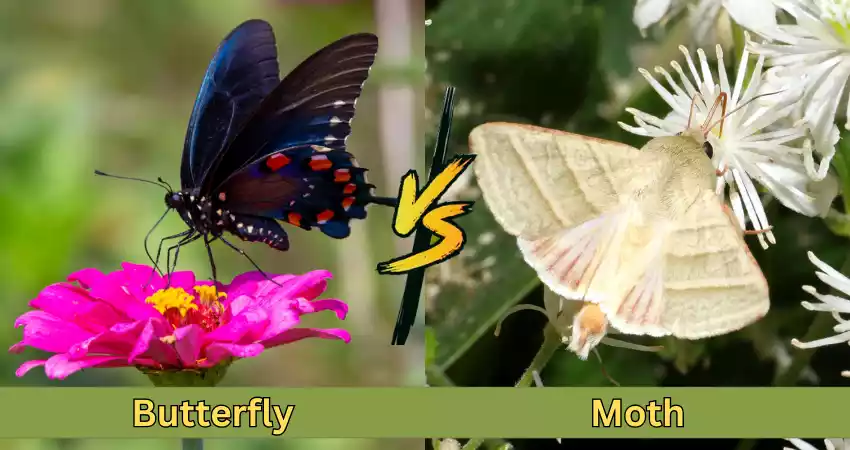Difference Between Butterfly and Moth
Butterflies and moths belong to the order Lepidoptera, encompassing a vast array of winged insects with distinct yet closely related characteristics. While sharing a common ancestry, they exhibit differences in behavior, appearance, and ecological roles.
Butterflies are typically diurnal, boasting vibrant colors and intricate wing patterns, while moths, often nocturnal, display a more muted palette and intricate antennae.
Butterfly
A butterfly is a delicate and colorful insect that belongs to the order Lepidoptera. Known for its graceful flight and vibrant appearance, a butterfly undergoes a remarkable transformation called metamorphosis.
Starting as an egg, it hatches into a tiny caterpillar, or larva, which then forms a chrysalis. Inside the chrysalis, the caterpillar undergoes a profound change, emerging as a fully developed butterfly with intricate wings adorned in various hues.
Butterflies are often associated with pollination, as they play a crucial role in the ecosystem by helping plants reproduce. Their enchanting presence in gardens and natural habitats makes them a symbol of beauty and transformation.
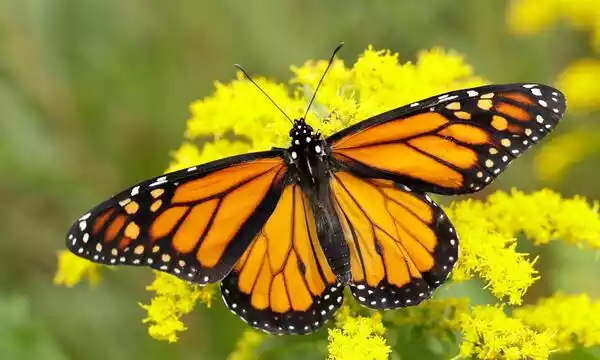
Physical Characteristics of Butterfly
- Wings: Butterflies have large, often brightly colored wings with intricate patterns.
- Antennae: They possess slender, club-shaped antennae.
- Body: The body is slender, and the thorax and abdomen are distinctly segmented.
- Proboscis: Butterflies have a long, coiled tube (proboscis) for feeding on nectar.
- Daytime Activity: Generally, butterflies are diurnal, being active during the day.
- Resting Position: When at rest, their wings are usually held upright and closed together.
Moth
A moth is a nocturnal insect belonging to the order Lepidoptera, akin to butterflies. While sharing a common life cycle of egg, larva, pupa, and adult, moths are distinguishable by their generally more muted colors and intricate antennae.
Unlike butterflies, moths are often active during the night, using their keen senses to navigate in low-light conditions. Some moths display remarkable patterns and sizes, ranging from small and inconspicuous to large and intricately marked species.
Moths, like butterflies, contribute to ecosystems by pollinating flowers and serving as a vital part of the food chain. Their diverse species and adaptations make them a fascinating group of insects in the natural world.
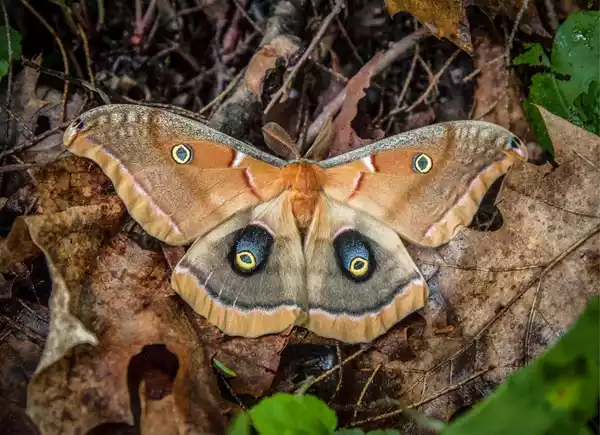
Physical Characteristics of Moth
- Wings: Moths typically have broader wings that are often duller in color compared to butterflies.
- Antennae: Moths have varied antennae shapes, but many species have feathery or comb-like antennae.
- Body: The body is stout and less visibly segmented than butterflies.
- Proboscis: Similar to butterflies, moths have a proboscis for feeding, but it can vary in length.
- Activity Time: Moths are primarily nocturnal, being active during the night.
- Resting Position: When at rest, moths usually hold their wings flat and parallel to the surface.
Comparison chart of Butterfly and Moth
| Characteristic | Butterfly | Moth |
|---|---|---|
| Wing Shape | Typically large, vibrant, and often colorful | Broad and can vary in color, usually muted |
| Antennae | Slender, club-shaped | Varied, often feathery or comb-like |
| Body Shape | Slender and segmented | Stout, less visibly segmented |
| Proboscis (Feeding Tube) | Long, coiled for sipping nectar | Varies in length, used for nectar or sap feeding |
| Activity Time | Diurnal (active during the day) | Nocturnal (active during the night) |
| Resting Position | Wings upright and closed when at rest | Wings held flat and parallel to the surface |
| Flight Pattern | Graceful and erratic, often in daylight | Erratic and fluttery, primarily at night |
| Pupae | Form chrysalis during pupal stage | Spin silk cocoon or pupate in soil or leaf litter |
| Color Palette | Bright and vibrant hues | Muted and earthy tones, often camouflage |
| Behavior | Visit flowers for nectar often pollinate | Attracted to light sources, can be agricultural pests |
Environmental Importance
Moths and butterflies have immense environmental significance because they are major pollinators, helping to ensure the reproduction of many species of plants. While they are visiting flowers to consume nectar, they accidentally transfer pollen between the flowers and help facilitate the fertilization process.
This is not only beneficial to plants, but it is also essential in the maintenance of biodiversity and supporting ecosystems. Moths and butterflies, with their various habitats and behavior, provide important pollinators for crops and wildflowers, as well as other plants and other plants, highlighting their crucial function in maintaining our delicate ecosystem.
Knowing and protecting their habitats is vital to protecting the ecological services offered by these fascinating insects.
Habitat Preferences: Butterfly vs Moth
Moths and butterflies show distinct preferences for their habitats, due to their adaptations to the environment. Butterflies prefer areas that are open and sunny like meadows, parks, and fields, where they can quickly access the nectar-rich flowers.
Certain species are specialized to specific host plants in which they lay eggs. Moths are, however, exhibit greater variety in the habitat they choose. While most are found in woodlands, however, a few thrive in urban settings and some prefer deserts or grasslands.

Moths typically employ camouflage to blend in with their surroundings during the day, securing themselves from prey. Both moths and butterflies exhibit incredible adaptability and are found in many different ecosystems around the world assisting in the complex balanced biodiversity.
Life Cycle: Butterfly vs Moth
Butterfly Life Cycle
Egg Stage:
Female butterflies lay eggs on host plants.
Eggs are small, round, and often laid singularly.
Larval Stage (Caterpillar):
The egg hatches into a caterpillar.
Caterpillar feeds voraciously on host plants, growing rapidly.
Distinct body segments and often adorned with hairs or spines.
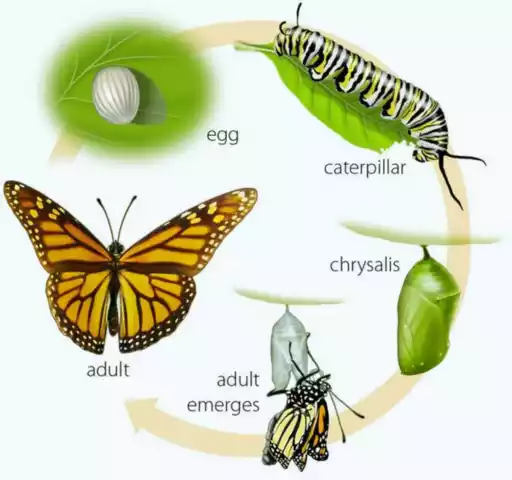
Pupal Stage (Chrysalis):
Caterpillar undergoes metamorphosis inside a chrysalis.
Chrysalis hangs from a surface, and the caterpillar transforms into a pupa.
This stage is a dynamic period of cellular changes.
Adult Stage (Butterfly):
An adult butterfly emerges from the chrysalis.
Wings expand and dry, completing the transformation.
Ready to engage in mating and contribute to the life cycle.
Moth Life Cycle
Egg Stage
Female moths lay eggs on a variety of surfaces.
Eggs are usually small, round, and may be laid in clusters.
Larval Stage (Caterpillar):
Hatched eggs give rise to caterpillars.
Caterpillars feed on diverse food sources, depending on the species.
Similar to butterflies, they undergo significant growth.
Pupal Stage (Cocoon or Pupa):
A caterpillar spins a silk cocoon or pupates in the soil.
Inside the cocoon or pupa, the larva transforms into an adult.
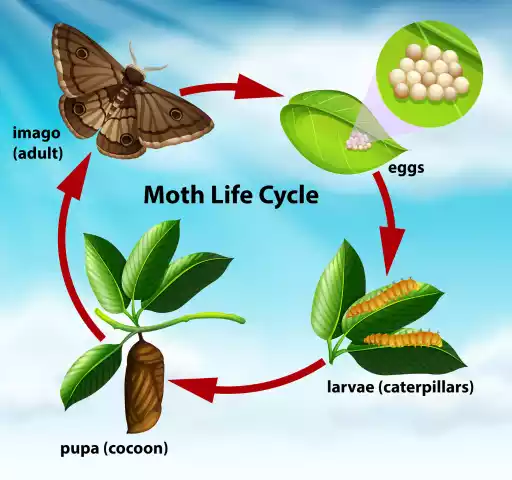
Adult Stage (Moth):
The adult moth emerges from the cocoon or pupa.
Wings expand and dry, allowing the moth to become fully functional.
Moths are nocturnal and typically engage in mating and reproduction during the night.
Behavioral Traits
Moths and butterflies exhibit distinct behaviors that aid in their survival and eco-friendly roles. Butterflies that are usually active during the daytime, gracefully move between flowers, sipping nectar, and pollinating plants.
Their vibrant colors and chaotic flight patterns are crucial in courtship displays and territorial displays. Moths are generally nocturnal and navigate through the dark using their sharp senses.
Moths can be attracted by lighting sources, and some are essential as pollinators in the dark. Both insects are beneficial to ecosystems through pollination and acting as an essential part of the chain of food showing the variety of behavior inside the Lepidoptera order.
Coloration and Patterns
Butterfly Coloration and Patterns
Butterflies are renowned for their vibrant and diverse coloration, often displaying striking patterns on their wings. These colors serve multiple purposes, including attracting mates, warning predators of toxicity, and providing camouflage.
- Vibrant Hues: Butterflies are known for their bright and vivid colors.
- Diverse Palette: A wide range of colors, including reds, blues, yellows, and oranges.
- Intricate Designs: Wings are often adorned with intricate patterns, spots, and stripes.
The intricate patterns can vary widely, from intricate spots and stripes to eye-catching designs. The vivid hues of butterflies contribute to their visual appeal and make them a notable presence in gardens and natural habitats.
Moth Coloration and Patterns
While moths also exhibit a range of colors and patterns, they generally tend to have more muted and earthy tones compared to butterflies. Many moths rely on cryptic coloration, blending in with their surroundings to avoid predators.
Some species, however, have evolved to mimic the appearance of more dangerous or toxic insects, enhancing their chances of survival. Moths showcase an impressive array of patterns, which can include intricate lines, spots, and wing shapes, contributing to their diverse and often subtle beauty.
Pupation Process: Butterfly vs Moth
Butterfly Pupation Process:
- Chrysalis Formation: After the larval (caterpillar) stage the butterfly pupates creating the Chrysalis. The caterpillar is attached to the surface and then undergoes a dramatic transformation inside the protection case.
- Metamorphosis: In the chrysalis, the caterpillar’s body goes through a metamorphosis process. Organs, tissues, as well as body parts are organized to transform into a butterfly.
- Development: Once the metamorphosis is completed butterflies emerge from their chrysalis. Its wings initially are soft and squishy, but then they expand and become harder which allows the butterfly to fly.
Moth Pupation Process:
- The formation of a cocoon or Pupa: Moths pupate by making a silk cocoon or pupating directly in the soil. The cocoon, or pupa, provides protection for the process of transformation.
- Metamorphosis: Like butterflies, moths go through a process called metamorphosis in the cocoon or pupa. This stage is characterized by the dramatic transformation of tissues, which leads to the growth of adult structure.
- Adult Emergence: At the end of metamorphosis the adult moth emerges out of the pupa or cocoon. The wings are unfolded and dry to prepare the moth to fly.
Common Myths and Misconceptions
The most common myths and misconceptions regarding moths and butterflies often result from misunderstanding their features. The most common myth is that all vibrant insects flying are actually butterflies.
This is ignoring the vibrant variety of moths. Another myth lies in the fact that butterflies are active during the daytime while moths are primarily night-time creatures.
However, there are day-flying butterflies and butterflies that fly at night which blur these distinctions. In addition, the idea that moths can be dull or boring ignores the stunning beauty of a variety of moth species.
Knowing and appreciating the nuances between moths and butterflies dispels these myths and reveals the intriguing realm that is Lepidoptera with its many patterns, colors, and ecological functions.
Human Fascination
Our fascination with moths and butterflies is grounded in their captivating beauty and symbolic value. The vivid colors and intricate patterns along with the elegant and swift flight of the butterfly create an emotion of wonder and awe, which makes them a popular subject in literature, art, and the world of culture.
In addition, the life cycle, between the caterpillar and butterfly represents change, growth, and renewal, which resonates with the human experience.
Moths, which are often thought of as mysterious and with nocturnal fascination are awe-inspiring by their diverse forms and behavior. Both insects are an emblem of resilience, fragility, and the interconnectedness of nature, creating a long-lasting fascination that transcends boundaries and generations.
Do moths have ears?
Yes, moths do have ears, however, they are very different from the human ears. Moth ears are referred to as tympanic organs, or simply “ears.” They are situated on the abdomen or thorax of moths, and they are used to listen for sounds, specifically the high-frequency echolocation calls made by bats.
Moths have developed their hearing abilities to defend themselves. If a moth hears ultrasonic echolocation of bats that hunt it can initiate defensive maneuvers to prevent being caught. The moth’s ability to discern these sounds enables it to react quickly and improve its odds of survival in the face of predators.
What is the largest moth in the world?
The title of the largest moth is typically awarded to the Atlas Moth (Attacus atlas). The species is native to Southeast Asia, including India in the Malay Archipelago, and the Indonesian region The Atlas Moth is known for its huge wingspan. In terms of area, it is the Atlas Moth’s wingspan could reach as high as 10 inches (25 centimeters) or more.
Beyond its dimensions and size, apart from its size, Atlas Moth is also recognized for its distinctive wing patterns and distinct long “tails” on its hindwings. Although its lifespan as an adult is quite small (around 2 weeks) The Atlas Moth’s size and beauty make it an interesting and famous part of the Lepidoptera order.
Conclusion
The universe of moths and butterflies is a tangle of beauty, diversity, and ecological importance. From the vibrant colors that butterflies display to the delicate attraction of moths, these insects captivate our attention and play an important role in pollination as well as the ecological balance.
Beyond their beauty, their symbolic transition from caterpillar to adult is a symbol of renewal and growth. When we look at the specifics that they live, knowing the distinctions between moths and butterflies enhances our relationship with the natural world and encourages an appreciation for these amazing creatures.
